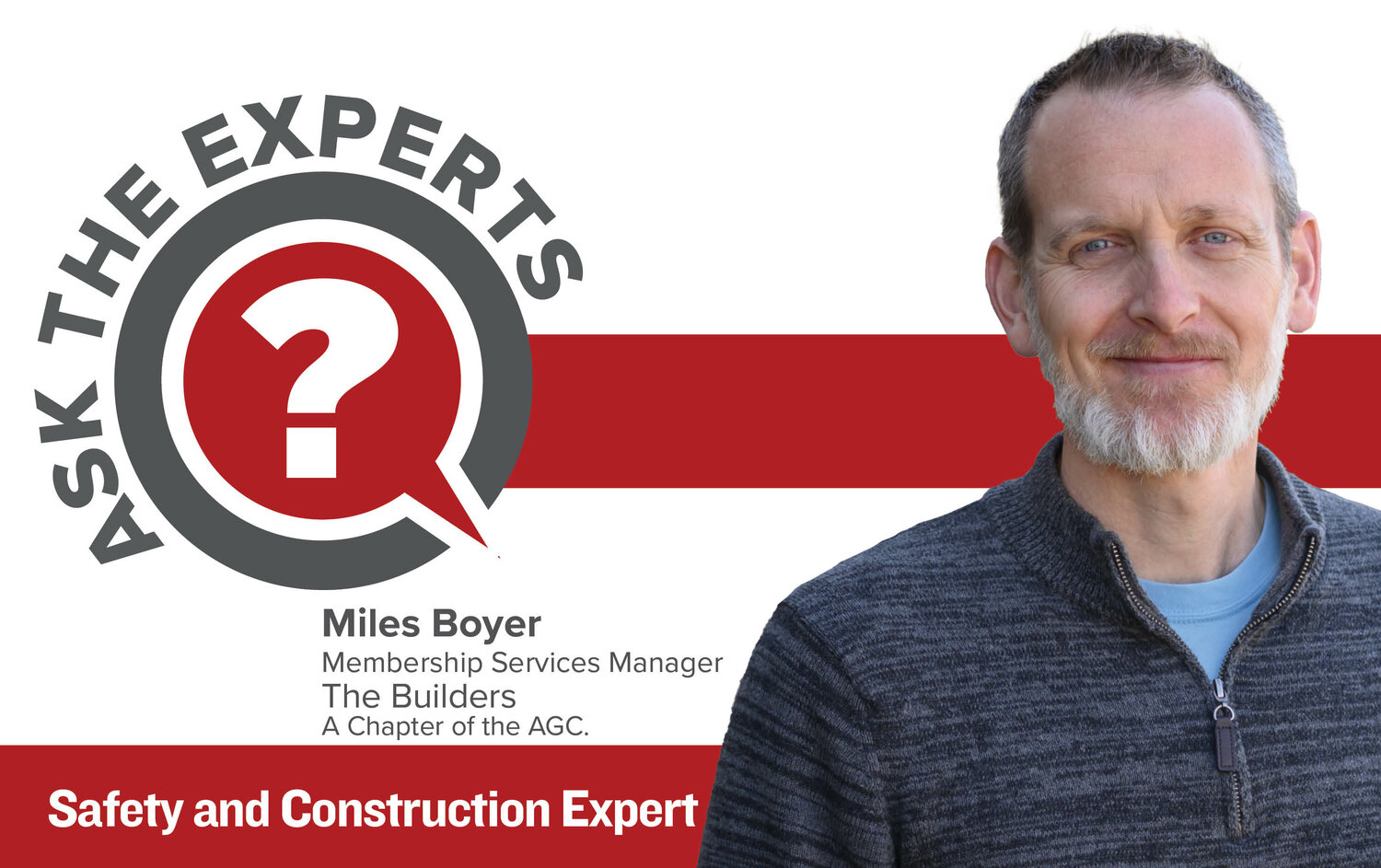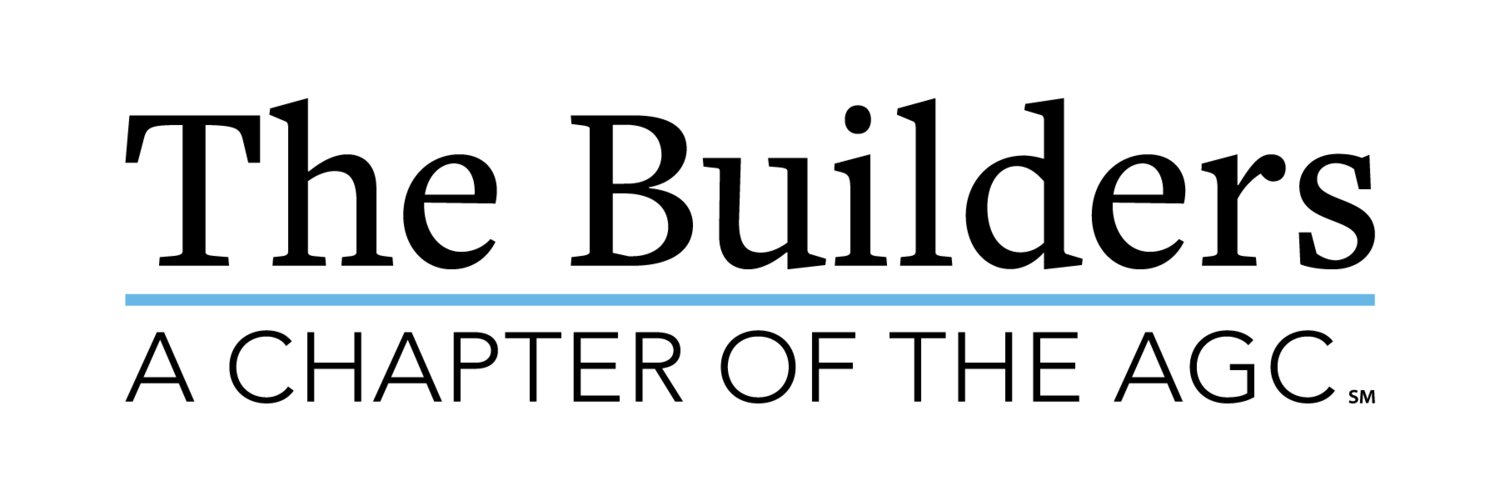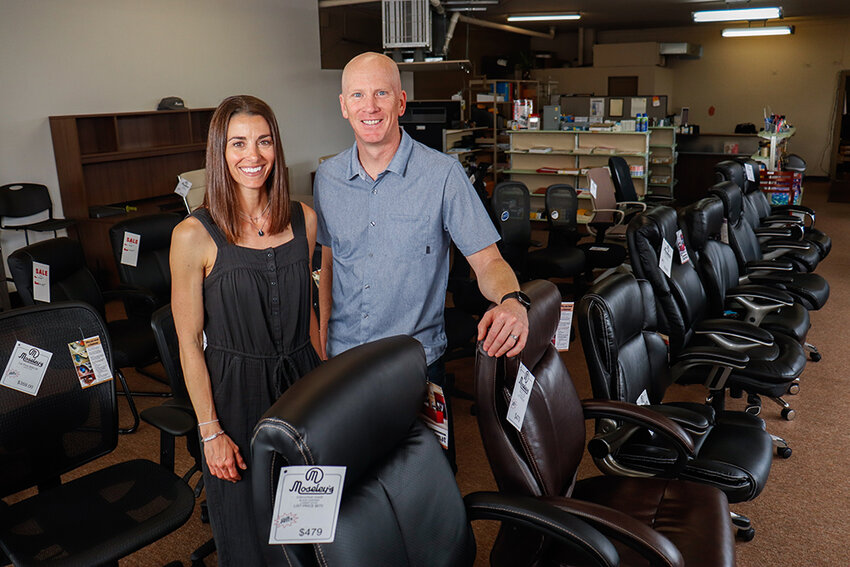To ensure safety remains a top priority in our industry, it's imperative that every member of your workforce is committed to fostering a culture of safety. May 6-10 is Construction Safety Week and the National Safety Stand-Down to Prevent Falls in Construction. During Construction Safety Week, we have a unique opportunity to unite as an industry, celebrating our commitment to safety and renewing our dedication to ensuring every worker returns home safely. Whether through educational activities, promotional events, or financial contributions, there are numerous ways to participate and demonstrate your support. Additionally, the National Safety Stand-Down, an initiative led by OSHA, focuses specifically on preventing falls in construction—a leading cause of fatalities in the construction field. Our safety team at The Builders will be providing valuable resources and events to assist your team in participating effectively. Explore more about how you can engage by visiting www.thebuildersagc.com.
Should I consider requesting a construction job site inspection by a safety professional?
Prevention is the best medicine, and a successful safety program uses a layered approach to prevent injuries. Some hazards are reccurring at each job site and others are created by the variables of a specific job site location or conditions. Job site inspections aid in prevention by:
- Identifying work practices related to safety and efficiency that could be improved.
- Adding focus to the hazards your team faces in the field.
- Identifying OSHA and environmental compliance issues at specific job sites.
- Identifying potential gaps in self-performed inspections and noting focus areas.
- Bringing attention to hazards created by other trades that will affect your team members.
- Identifying issues that should be addressed as the job site progresses.
- Identifying areas where additional training is necessary due to specific issues at the worksite.
Job site inspections add immediate value and have the long-term benefit of improving the culture of safety of your organization. Adding job site inspections to your safety program can prevent problems down the road. The Builders safety team can perform these inspections and offer assistance and recommendations for your overall safety and compliance programs. To learn more about The Builders safety services or to schedule your job site inspection, visit www.thebuildersagc.com or contact me directly.
As a small business, we need help with our construction safety program. What is the best, but most cost-effective way to do that?
The Builders highly qualified training staff are available to assist small businesses in enhancing their construction safety programs. We offer customized training tailored to your specific needs and can provide on-demand training for your team. Our safety team ensures that your staff receives the highest quality education in various safety aspects. Additionally, as a valued member of the association, you can benefit from a discount on our training services.
The Builders Safety and Health Services Department trains approximately 7,000 people annually. Every participant who successfully completes a training program is issued a completion card and entered into our comprehensive electronic database.
Each of our instructors has real world experience and understands the importance of training in today’s regulatory climate and are ready to assist your company in ensuring your employees are properly trained. To learn more or become a member to receive a significant discount, contact me, or visit
www.thebuildersagc.com.
How can I learn more about the key people and projects in the commercial construction industry?
The Builders, a chapter of the AGC, publishes Modern Builder magazine quarterly. Modern Builder is the flagship print publication of the association, with a distribution of more than 2,000 people across the construction industry in the heartland. Each issue shares stories of our members’ successes, recaps recent association events and welcomes new members.
Uniquely, Modern Builder is published in-house rather than by a third party, so the content reflects the close connection to the people, the region and the projects featured. It is the premier industry publication for the heartland and serves as a historical record of commercial building projects in Kansas and Missouri since the beginning of the 20th century.
It is a benefit provided free to members. Anyone employed by a member company can update their Builders communication preferences online to receive the magazine or contact me to update your profile for you. To become a member and receive this service or to learn more, reach out or visit
www.thebuildersagc.com.
How can I ensure my employees are aware of underground hazards on the job site?
Ensuring the safety of employees on a job site involves a vigilant approach to identifying and addressing potential hazards, even those hiding beneath the surface. Damaging and encountering underground utilities such as electrical power cables and pipelines can result in serious injuries or even death. To avoid any issues with buried utilities, The Builders safety team suggests:
Look for paint or flags marking locations of electrical lines.
- Review marked-out areas. They may not be exact. If not sure, call the utility company to verify before digging.
- Plan to dig by hand when working within two feet of a mark-out, to make sure you do not hit a utility line or conduit with heavy equipment.
- Ask your supervisor or an expert to review the work area before work begins and as needed during your shift.
If you hit a line, you must report it! If it’s a gas line, evacuate everyone, secure the area, and call the fire department. Visit
www.thebuildersagc.com to see more suggestions and tips from our safety experts.
How can my company avoid injuries and impairment in the cold weather on the jobsite?
Cold stress on the jobsite ranks among the top occupational hazards during winter months. The cold temperatures and increased wind chill can cause heat to leave the body and can put construction workers at risk. Some of these risks include hypothermia, frostbite and trench foot.
To reduce cold stress effects on workers you can:
- Provide engineering controls, e.g., radiant heaters.
- Gradually introduce workers to the cold.
- Monitor for symptoms of cold stress.
- Schedule breaks in warm areas.
The Builders Safety Team provides many more comprehensive safety protocols and tips, like work attire and crucial steps to take, to ensure workers' well-being and to maintain a productive work environment at www.thebuildersagc.com.
How can my company find the right resources and training to maintain a safe and healthy workplace year-round?
Maintaining a safe and healthy workplace is of central importance to contractors and their employees. That is why so many Builders member companies team up with our Safety, Health & Environmental Services annually.
With years of experience in the industry, we offer comprehensive safety training courses year-round, including an OSHA Fall Protection Course and Silica Competent Person Course. The Builders Safety team offers industry-leading training tailored to meet construction-specific needs, ensuring employees and businesses are well prepared to mitigate risks and create a safer working environment.
We prioritize hands-on learning and interactive training methods to ensure that you retain crucial safety information. Visit
www.thebuildersagc.com to find the essential safety courses and tools you need to create a safer workplace year-round.
Where can we go for Spanish language resources to better communicate with Spanish speaking employees?
Hispanic Heritage Month is Sept. 15 - Oct. 15, so it’s a great time to be thinking about how to provide support for your Spanish-speaking workers. A comprehensive safety strategy includes appropriate communication and education for ensuring your Hispanic construction population has the resources to work safely for themselves, their colleagues and their families.
The construction industry has a large Hispanic and Latino population, so employers should strive to provide adequate resources with an understanding that English may not be the most effective way to communicate critical information. This could include providing translations on anything from the instructions on tools, diagrams, pamphlets and anything else that is used on job sites.
As an industry with a high-risk work environment, it also means safety and health information critical to the well-being of the workforce must be delivered in a way that is accessible to all. As a starting point to help companies build out their Spanish language resources, The Builders Safety Team offers members Spanish translated toolbox talks at
www.thebuildersagc.com.
How can my company get involved with the Construction Suicide Prevention Week initiative?
As one of the founding members and a sponsor of the Construction Suicide Prevention Week initiative taking place September 4-8, we want to spread awareness about the unique challenges workers face in construction that lead to suicide and what we can do to prevent it. The construction industry has the second highest rate of suicide in the United States at 53.3 deaths per 100,000 workers, according to the Center for Disease Control (CDC). In the U.S., there are approximately 123 suicides per day — that breaks down to one death every 12 minutes (SafeBuild Alliance). It will take all of us to prevent suicide. Luckily, the generous support for the Construction Suicide Prevention Week initiative from Builders members and others around the industry has made it possible to provide resources to help employers effectively support mental wellness among their workers. Resources are also available to help companies plan a stand-down or other event with your employees during the week. If you haven’t already, Builders encourages you to register your company’s participation in this year’s initiative on the Construction Suicide Prevention Week website. When it comes to preventing suicide, knowing where to start can be overwhelming, but the website has many resources that can help save lives. Visit constructionsuicideprevention.com.
How can my workers stay protected from poor air quality on an outdoor job site?
As wildfires burn in Eastern Canada, smoke and pollutants have heavily impacted the air quality levels across the world, including here in the heartland. It is especially important for those working outdoors, like construction job sites, to follow certain protocols to avoid any life-threatening health conditions.
While every situation is different, here are some general protocols to follow:
- When poor air quality reaches extreme levels, stay indoors if possible, and close all windows and doors to prevent outdoor smoke from entering your home.
- If you must be outside, wear a KN94, N95 or P100 respirator mask to filter out most of the smoke particles.
- Avoid as much physical exertion as possible and limit your exposure time outdoors.
- Stay away from power lines, gas lines and other hazardous areas.
- Hydrate regularly and watch for symptoms of smoke inhalation such as coughing, wheezing or shortness of breath.
It is very important that companies, especially those with outdoor workers, understand the implications of dangerous air quality and how to provide employees with the appropriate protocols. You can help communicate these protocols by posting on your website, sending an email, or even holding a meeting with your employees. You can learn more about how to stay safe during times like these by contacting The Builders safety team. Visit
www.thebuildersagc.com for more safety tips.
How can I stay protected from heat stress in the workplace?
With heat levels rising during this time of year, it is important that you are prepared for heat exposure on the job site, both indoors and outdoors. Almost 75% of heat illness fatalities happen during the first week of work. When the human body is unable to maintain a normal temperature, heat-related illnesses occur. Risk factors for heat illness include high temperature and humidity, direct sun exposure, low liquid intake, and much more.
To avoid these risks, make sure your workers follow these safe work practices:
- Avoid caffeinated drinks and alcohol — both can increase the potential for dehydration.
- Drink cool water — at least one cup every 20 minutes, even if you are not thirsty.
- Take frequent breaks — take time to recover from the heat in a shady and/or cool location.
- Dress for the heat — wear a hat and light-colored, loose-fitting, breathable clothing, if possible.
- Watch out for each other — monitor yourselves and one another for signs of heat illness.
Heat stroke is the most serious heat-related health problem. It occurs when the body's temperature regulating system fails and the body temperature rises to critical levels. The Builders safety team has best practices and many resources for heat stress to help you understand and know the symptoms along with how to handle critical issues if they arise. Visit www.thebuildersagc.com to learn more about how our safety team can help your company stay cool through the summer months.
How can my company raise awareness for mental health and suicide in the construction industry?
May is Mental Health Awareness Month, and The Builders and the construction industry as a whole, are committed to raising awareness and encouraging discussions about mental health and substance abuse to reduce suicide in the workforce. Builders is proud to be one of the founding leaders of the Construction Suicide Prevention Week initiative, which takes place in September each year.
It takes construction professionals at all levels working together in collaboration with other industry partners to build a culture of support and prevention. While regulations and monitoring for physical safety have increased dramatically over the years, mental health care is still behind. Mental health must be as high a priority as wearing a hard hat.
Focusing on creating a safe culture, providing training to your staff, raising awareness of the mental health challenges the industry faces, making resources available to all employees, and normalizing conversations around mental health can, and will, save lives throughout the construction industry. You can find resources to help you spot warning signs, start the conversation and provide support to those who need it by visiting
www.thebuildersagc.com








